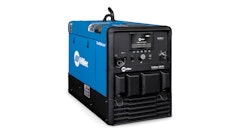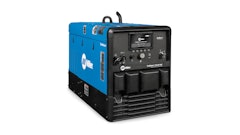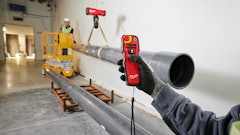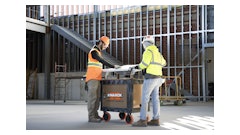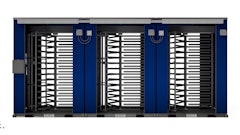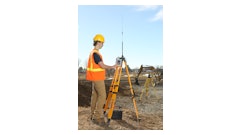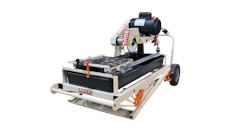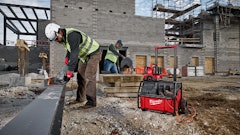
Renting the right generator for a project is not as simple as walking into a rental yard and pointing to the nearest model. You need to understand a little bit about electricity and be able to adequately communicate the parameters of the job to ensure you get the right equipment for your needs.
Gary Davis, national strategic account manager, Kohler Rental Power, says the most important factors when choosing a generator are volts, amps and phase. Voltage is a measure of the strength of an electrical current. Most construction sites typically run on 208- or 480-volt current. Amps, on the other hand, measure the volume of the electrical current. In other words, voltage is how much electricity there is, while amperage is how fast that electricity is moving (if at all).
Whether you need a single- or three-phase generator depends on the size of the equipment you plan to run. Single-phase distribution is used when loads are mostly lighting and heating, with few large electric motors. A single-phase supply connected to an alternating-current (AC) electric motor does not produce a revolving magnetic field. Single-phase motors need additional circuits for starting, and are uncommon in ratings above 10 or 20 kW.
High-power systems (hundreds of kVA or larger) are nearly always three phase. According to John Garcia, manager of generator development - Americas at Doosan Infracore Portable Power, single-phase motors use one set of windings to start, while three-phase motors use three sets. “If you have a large motor to start, you need very large windings. With a three-phase motor, you can make it smaller by connecting three sets of windings.”
Size is everything
Generators come in a wide range of sizes. Those with power supply capacities of 5 to 50 kW are readily available in the personal and home use markets, while industrial generators run anywhere from 50 kW to over 3 Megawatts.
Many people believe smaller generators can be used for standby electric power because they are not running all the time. Unfortunately, under sizing is one of the most common mistakes when renting or buying a generator. Not only does it pose a potential risk to the generator, it can damage other assets connected to it, create hazardous situations and limit overall productivity of the unit.
“If a generator is too small, it could fail catastrophically,” says Garcia. At the very least, it will shut down, leaving you without power.
One way to avoid under sizing is to be aware of the inrush current. Inrush current or input surge current refers to the maximum, instantaneous input current drawn by an electrical device when first turned on. Pumps, for example, typically require high inrush current, says Davis. AC electric motors and transformers might draw several times their normal full-load current when first energized. For this reason, it’s important to factor in the anticipated inrush current when sizing a generator.
The amount of inrush current is also affected by the number and types of tools being powered. According to Davis, you can minimize inrush current by “sequencing” the electrical load by turning equipment on in stages.
Generators that are larger than needed for the load won’t do immediate damage to equipment, but they can be detrimental in the long run by causing wet-stacking in the engine. More importantly, oversized generators are costly and wasteful.
“I would say 80% to 90% of generators on construction jobsites are oversized,” says Davis. The reason is that contractors and rental sources tend to err on the side of caution when sizing a generator to a load. By using a generator that’s too large, however, significant amounts of fuel are wasted, which adds to the cost of a project over time and has negative consequences to the environment.
Don Leher, industrial sales manager at Gen-Tech in Glendale, AZ, is in the business of helping customers choose the right generator for the job. He says it comes down to getting as much information from that customer as possible.
“The more information we can glean up front, the better match we can suggest for the project in terms of on-site power generation,” he indicates. “If we can gather enough information to help us determine the demand of each of the loads to be powered, we can calculate the requirements, ensure we have at least a 20% reserve capacity and ensure the generator is properly sized.”
Unfortunately, many times, temporary generators sent to jobsites are over sized because either the information was not available or no one asked the right questions. “In the rental generator business, knowledge is king, just as it is in all business,” Leher says. “Knowing the right questions to ask, and asking them, is the best way to ensure the needs of the project are met.”
Additional considerations
There are several other factors to think about when renting a generator. “One important thing to consider is fuel capacity,” says Garcia. “How often will you need to refuel? Can a fuel truck come to the site or will you need an auxiliary day tank?”
He also suggests renting generators with environmental containment systems. “To remediate a spill of diesel fuel on a 4’ x 4’ piece of land costs $10,000,” Garcia points out. “Contractors are required to ensure the equipment they use is environmentally compliant.”
Lastly, be sure to ask for any auxiliary equipment you might need when renting the generator. According to Garcia, this could include additional cable, extra distribution panels or an automatic transfer switch.
He adds, “The more information a contractor goes in with, the better the chances are that the rental company will be able to supply the right equipment.”













